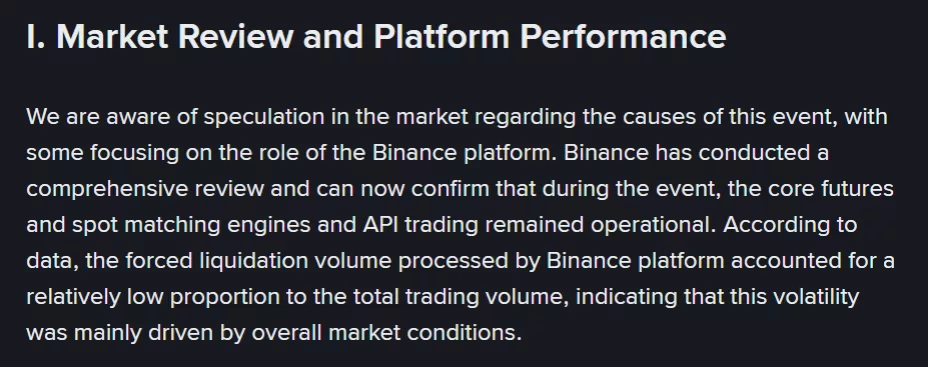- Binance distributed $283 million to users to compensate for the losses from depegged assets USDe, BNSOL, and WBETH.
- The compensation followed a significant market crash on October 10, which was influenced by geopolitical tensions and macroeconomic factors.
- Binance clarified that its core systems remained operational during the event, attributing the issues to external market conditions and internal token mechanics.
Following the tumultuous market events on October 10, Binance announced it would compensate affected users within 24 hours. The exchange’s support announcement states that between 20:50 and 22:00 UTC, extreme volatility caused sharp sell-offs, triggering depegging of assets like USDe (Ethena), BNSOL (Binance Solana), and WBETH (Wrapped Beacon ETH).
Binance confirmed it disbursed the $283 million in two batches, covering losses where positions were liquidated, or internal transfers or redemptions were delayed. The payout was calculated based on the difference between the liquidation price and the market price at 00:00 UTC on October 11, 2025.
What led to the chaos?
On October 10, heavy institutional and retail selling cascaded across crypto markets, wiping out over $19 billion in leveraged positions. During the sell-off, assets like wBETH and BNSOL lost alignment with their underlying prices, and USDe briefly traded at ~$0.66, far from its $1 peg.
Newsletter
Get weekly updates on the newest crypto stories, case studies and tips right in your mailbox.
Binance, in its public statement, denied that the exchange platform itself failed. It asserted that its core matching engines and API operations remained functional throughout the event. However, they did acknowledge that ‘some platform modules briefly experienced technical glitches’ leading to de-pegging issues.

Binance attributed the depegging issues to factors such as dormant limit orders (some open since 2019) getting triggered during low liquidity phases. They also said that there was a display anomaly due to recent changes in decimal place parameters. This led to the displayed prices in the user interface to appear as zero, which was just a display issue and not due to an actual zero price.
Was it a glitch or a coordinated attack?
Amid speculation about a coordinated attack, Binance clarified that the extreme market downturn occurred before the depegging incidents. The exchange stated that records showed prices fell to their lowest point between 21:20 and 21:21 UTC on October 10, while the severe depegging occurred after 21:36 UTC on the same day.
Following the incident, Binance announced plans to enhance its risk control measures and adjust token parameters to prevent similar occurrences in the future. The USDe index rule will now include a minimum price threshold to improve price stability, and the frequency of risk control parameter reviews will be increased to ensure dynamic adjustments in response to market conditions.













